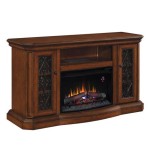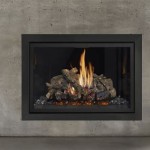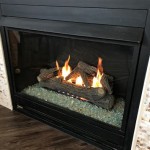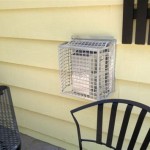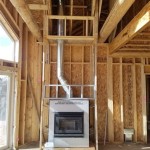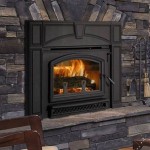Best Floor Tile for Fireplace Hearth: A Comprehensive Guide
The fireplace hearth serves as a crucial element in both the functionality and aesthetics of a fireplace. It provides a non-combustible surface to protect the surrounding flooring from sparks and embers, while also contributing to the overall design and style of the room. Choosing the right floor tile for a fireplace hearth requires careful consideration of several factors, including heat resistance, durability, safety, aesthetics, and cost. This article provides a detailed examination of the different types of floor tiles suitable for fireplace hearths, outlining their pros and cons to assist in making an informed decision.
Key Considerations When Choosing Hearth Tile
Selecting the appropriate tile for a fireplace hearth involves more than just visual appeal. There are several practical aspects that must be taken into account to ensure safety and longevity. These key considerations guide the decision-making process and ensure the chosen tile is suitable for the intended application.
Heat Resistance: Perhaps the most critical factor is the tile's ability to withstand high temperatures. The hearth is directly exposed to the heat radiating from the fireplace, and the tile must be able to endure these temperatures without cracking, warping, or discoloring. Tiles with high heat resistance ratings are essential to prevent damage and maintain structural integrity over time. Specific material compositions, like those found in porcelain and certain natural stones, offer superior heat resistance compared to others. Testing and certification standards provide valuable information on a tile’s heat tolerance.
Durability and Maintenance: The hearth is a high-traffic area, often subject to soot, ash, and physical impact from fireplace tools. The chosen tile must be durable enough to withstand these conditions without scratching, chipping, or staining. The surface of the tile should also be easy to clean and maintain, requiring minimal effort to keep it looking its best. Consider tiles with a low porosity to resist staining from soot and spills. Regular cleaning with appropriate cleaning agents will help to extend the lifespan and maintain the appearance of the hearth tile.
Slip Resistance: Safety is paramount, and the hearth surface should provide adequate slip resistance, especially if it is located in a high-traffic area or if there are children or elderly individuals present. Polished surfaces are generally more slippery than textured or matte finishes. A tile's slip resistance is often measured using a coefficient of friction (COF) rating, which indicates the level of grip it provides. Selecting a tile with an appropriate COF rating is crucial for preventing slips and falls around the fireplace.
Types of Floor Tile Suitable for Fireplace Hearths
Several types of floor tiles are suitable for fireplace hearths, each with its own unique set of properties, advantages, and disadvantages. Understanding these differences is crucial for selecting the best tile for a specific situation.
Porcelain Tile: Porcelain tile is a dense, durable, and heat-resistant option that is well-suited for fireplace hearths. It is made from a mixture of clay, sand, and other materials that are fired at high temperatures, resulting in a hard, non-porous surface. Porcelain tiles are available in a wide range of colors, styles, and textures, making them a versatile choice for various design aesthetics. They are also relatively easy to clean and maintain, resisting stains and scratches effectively. Due to its high density, porcelain is less prone to cracking under thermal stress compared to other tile types.
Pros: Excellent heat resistance, high durability, low porosity, wide variety of styles, easy to clean.
Cons: Can be more expensive than some other tile options, can be cold to the touch if not properly insulated.
Ceramic Tile: Ceramic tile is another popular choice for flooring and can be used for fireplace hearths, although it is generally less durable and heat-resistant than porcelain tile. Ceramic tiles are made from clay that is fired at lower temperatures, resulting in a softer, more porous surface. While they are available in a wide array of colors and designs, they are more susceptible to scratching, chipping, and staining than porcelain tiles. However, ceramic tiles are generally more affordable than porcelain and can still be a viable option for hearths that are not exposed to extreme heat or heavy use. Consider its PEI (Porcelain Enamel Institute) rating, which indicates its resistance to surface abrasion.
Pros: Affordable, wide variety of styles, relatively easy to install.
Cons: Lower heat resistance than porcelain, more porous, less durable.
Natural Stone Tile: Natural stone tiles, such as granite, slate, travertine, and marble, offer a unique and luxurious look for fireplace hearths. These tiles are quarried directly from the earth and possess natural variations in color, pattern, and texture, adding character and visual interest to the space. Granite and slate are particularly well-suited for hearths due to their high heat resistance and durability. Marble and travertine, while beautiful, are more porous and may require sealing to prevent staining. Proper sealing and maintenance are crucial for preserving the appearance and longevity of natural stone tiles.
Granite: Granite is an igneous rock known for its exceptional hardness, durability, and heat resistance. It is a popular choice for fireplace hearths due to its ability to withstand high temperatures without cracking or warping. Granite is available in a wide range of colors and patterns, from speckled to veined, offering diverse design options.
Slate: Slate is a metamorphic rock with a naturally layered texture that provides excellent slip resistance. It is also highly heat-resistant and durable, making it a suitable choice for hearths. Slate tiles are typically available in earthy tones, such as grays, blacks, and browns, adding a rustic and natural aesthetic to the fireplace area.
Travertine: Travertine is a type of limestone characterized by its porous surface and warm, earthy tones. While visually appealing, travertine is more porous than granite or slate and requires sealing to prevent staining. It is also less heat-resistant and may not be suitable for hearths that are exposed to intense heat.
Marble: Marble is a metamorphic rock prized for its elegant veining and luxurious appearance. Like travertine, marble is more porous than granite and slate and requires sealing to protect it from staining. It is also susceptible to etching from acidic substances. Although it can withstand basic heat, it's not the most fire-resistant of the natural stones.
Pros: Unique and luxurious appearance, natural variations in color and pattern, good heat resistance (especially granite and slate).
Cons: Can be expensive, some types (e.g., marble, travertine) are more porous and require sealing, may require more maintenance than other tile options.
Quarry Tile: Quarry tile is a type of unglazed ceramic tile made from natural clay that is fired at high temperatures. It is known for its durability, slip resistance, and rustic appearance. Quarry tile is a suitable option for fireplace hearths, especially in homes with a more traditional or country-style aesthetic. It is typically available in earthy tones, such as reds, browns, and grays, and can be sealed to enhance its stain resistance.
Pros: Durable, slip-resistant, relatively affordable, rustic appearance.
Cons: Limited color and style options, can be porous if not sealed properly.
Installation and Maintenance
Proper installation and maintenance are crucial for ensuring the longevity and performance of the chosen hearth tile. A well-installed hearth not only looks better but also provides a more effective barrier against heat and embers.
Installation Considerations: The installation process typically involves preparing the subfloor, applying a layer of mortar, setting the tiles, and grouting the joints. It is important to use heat-resistant mortar and grout designed for high-temperature applications. The subfloor should be level and stable to prevent cracking or shifting of the tiles. Professional installation is recommended to ensure that the tiles are properly aligned and that the grout lines are sealed effectively. This step is especially important when working with natural stone, as improper installation can lead to moisture penetration and damage. An expansion joint may be needed to allow for slight shifting and movement of the hearth due to temperature fluctuations.
Sealing: Porous tiles, such as natural stone (marble, travertine) and some ceramic tiles, should be sealed to protect them from staining and moisture damage. A penetrating sealer is typically applied to the tile surface, filling the pores and creating a barrier against liquids. The frequency of sealing depends on the type of tile and the level of use, but it is generally recommended to seal the tiles at least once a year. Always use a sealant appropriate for the specific type of tile being treated.
Cleaning: Regular cleaning is essential for maintaining the appearance of the hearth tile. Sweep or vacuum the surface regularly to remove loose debris, such as ash and soot. For stains, use a mild detergent and warm water. Avoid using harsh chemicals or abrasive cleaners, as they can damage the tile surface. For natural stone tiles, use a pH-neutral cleaner specifically designed for stone. Consider using a soft-bristled brush to remove stubborn stains without scratching the tile.
Repair: If a tile becomes cracked or chipped, it should be repaired or replaced promptly to prevent further damage. Small cracks can be filled with epoxy or grout, while larger cracks or chips may require replacing the entire tile. When replacing a tile, it is important to match the existing tile as closely as possible in terms of color, size, and texture. Keep extra tiles from the original installation on hand for future repairs.

Choosing The Best Tiles For Your Fireplace

What Are The Best Tiles For A Fireplace Rotherham Centre

Fireplace Tiles Classique Floors Tile Portland Or

Fireplace Tile Ideas 10 Decorative Designs Using Ceramic Porcelain Metal And More Log Burner Living Room Wood Burning Stoves

Using Floor Tile For Your Fireplace Amirian Home Glendale

Ask Maria Should My Fireplace Surround Be Subway

Fireplace Tiles Classique Floors Tile Portland Or

Operation Hearth Re Tile Grouted Goodness Fireplace Tiles Home

Fireplace Tile Ideas Designs To Inspire You

The Fireplace A Hot New Trend In Cement Tile Zia
Related Posts

